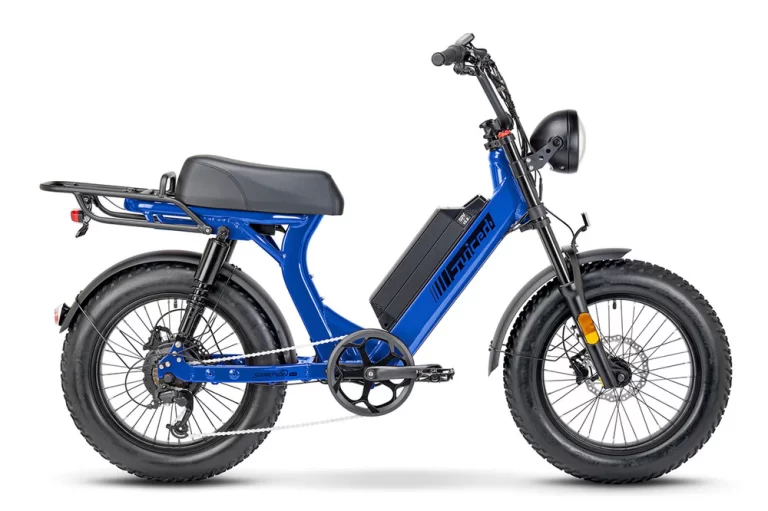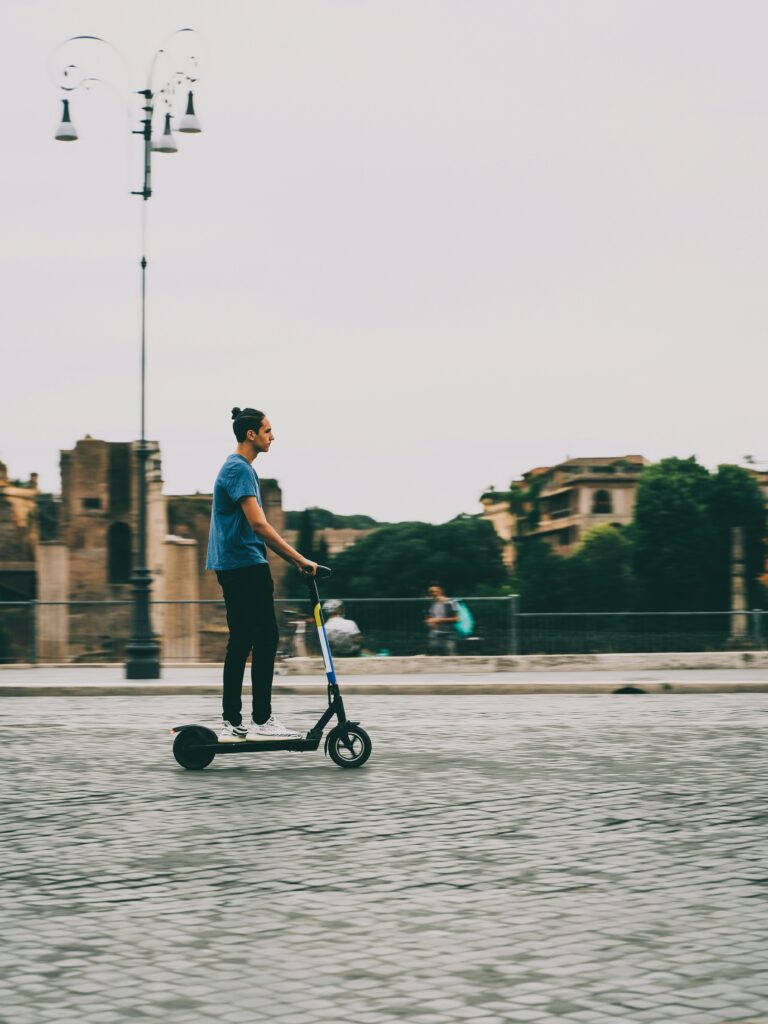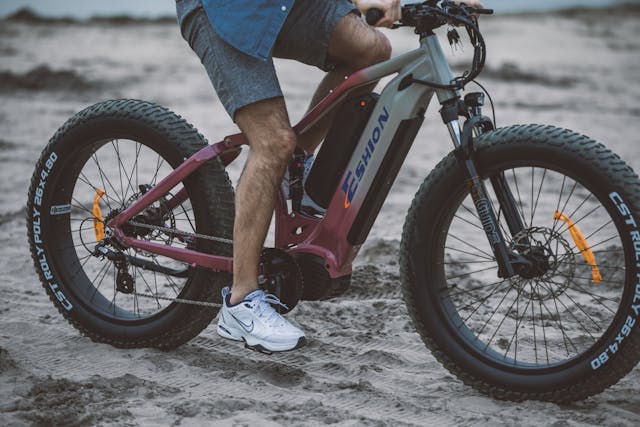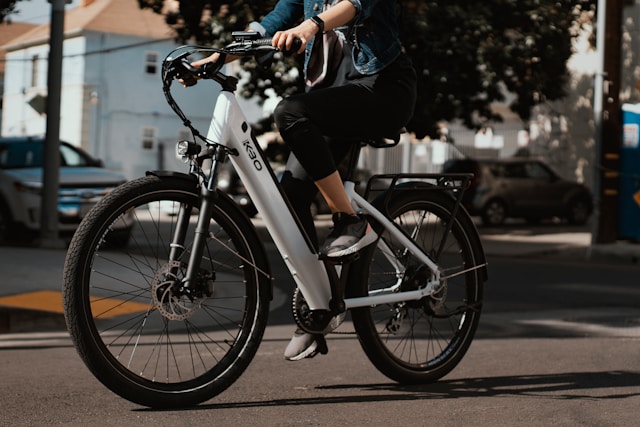Mastering E-MTB Geometry and Weight: The Ultimate Guide
Last Updated on October 1, 2024 by Kristina Grant
Ever wondered why some e-mountain bikes feel like a dream to ride while others seem clunky and awkward? The answer often lies in their geometry. E-MTB geometry refers to the angles, measurements, and proportions that define a bike’s frame and how it handles on the trail.
Just like a car’s suspension or a motorcycle’s ergonomics, e-MTB geometry plays a crucial role in determining your overall riding experience. Weight and geometry are two of the most important factors that influence how an e-bike performs. In this blog post, we’ll dive deep into the world of e-MTB geometry and explore how these two elements work together to create a ride that’s tailored to your needs and preferences.
Understanding E-MTB Geometry: The Building Blocks of Your Ride
E-MTB geometry is a complex interplay of angles and measurements that determine how your bike handles on the trail. To truly appreciate its significance, let’s break down some of the key components:
Head Tube Angle (HTA):
Think of the HTA as the bike’s steering wheel. A steeper HTA (closer to 65 degrees) makes the bike more agile and responsive, perfect for tight corners and technical terrain. However, it can also feel less stable at higher speeds.
On the other hand, a slacker HTA (closer to 67 degrees) provides greater stability, especially on downhill sections. It’s ideal for riders who prioritize speed and control.
Chain Stay Length (CSL):
The CSL is the distance between the bottom bracket and the rear axle. A shorter CSL (around 425-435mm) offers quicker acceleration and better maneuverability, making it suitable for climbing and technical riding.
A longer CSL (around 440-450mm) provides more stability and traction, especially at higher speeds. It’s ideal for riders who prioritize downhill performance and stability.
Bottom Bracket Height (BBH):
The BBH is the distance between the bottom bracket and the ground. A higher BBH (around 350-360mm) improves clearance over obstacles and reduces the risk of pedal strikes. However, it can also make the bike feel less stable in corners.
A lower BBH (around 340-350mm) provides better cornering stability and a more planted feel. However, it increases the risk of pedal strikes on technical terrain.
Reach:
Reach is the horizontal distance from the center of the bottom bracket to the center of the head tube. A longer reach (around 460-470mm) provides a more stretched-out riding position, which can be beneficial for taller riders or those who prefer a more aggressive posture.
A shorter reach (around 440-450mm) offers a more upright riding position, which can be comfortable for shorter riders or those who prefer a more relaxed feel.
RELATED CONTENT
The Impact of Weight on E-MTB Performance: Lighter is Better?
Weight is a crucial factor to consider when choosing an e-MTB. While electric bikes are inherently heavier than traditional mountain bikes due to the battery and motor, there are ways to minimize weight and improve overall performance.
Battery Weight:
The battery is the heaviest component of an e-MTB, and its weight can significantly impact the bike’s handling and agility. A heavier battery can make the bike feel sluggish and difficult to maneuver, especially on climbs.
Fortunately, there are options for reducing battery weight. Some manufacturers offer lighter battery packs, while others have developed frame designs that integrate the battery more efficiently.
Motor Weight:
The motor is another significant contributor to an e-MTB’s weight. While more powerful motors can provide better performance, they also tend to be heavier.
When choosing an e-MTB, consider your riding style and the terrain you’ll be encountering. If you prioritize climbing and technical riding, a lighter motor might be a better option. However, if you’re primarily interested in downhill performance, a more powerful (and heavier) motor might be worth the trade-off.
Component Weight:
Every component on an e-MTB contributes to its overall weight. From wheels and tires to brakes and drivetrains, lighter components can make a noticeable difference in performance.
Consider investing in carbon fiber wheels, tubeless tires, and lightweight components to reduce the overall weight of your e-MTB.
Remember: While lighter weight can improve performance, it’s essential to strike a balance. Too much weight reduction can compromise durability and reliability.
How Weight and Geometry Interact
Weight and geometry are two interconnected factors that significantly influence an e-MTB’s performance. While they may seem like separate entities, they work together to create the overall riding experience.
Balancing Weight and Geometry:
- Weight Distribution: A heavier front end can make a bike feel less stable, especially on steep descents. On the other hand, a heavier rear end can make the bike feel sluggish and difficult to accelerate.
- Handling: A lighter bike is generally easier to maneuver and more responsive to rider input. However, a heavier bike can provide better stability and traction, especially on rough terrain.
- Climbing: A lighter bike is easier to climb, but a bike with the right geometry can help offset the effects of weight. For example, a shorter chain stay length can improve acceleration and climbing performance.
- Descending: A heavier bike can provide better stability on descents, but a bike with the right geometry (e.g., a slacker head tube angle) can help mitigate the effects of weight.
Finding the right balance between weight and geometry is essential for achieving optimal performance on an e-MTB.
Case Studies:
To illustrate how weight and geometry interact, let’s consider two hypothetical e-MTB models:
- Model A: Lightweight frame, short chain stays, steep head tube angle. This bike would be ideal for riders who prioritize climbing and agility.
- Model B: Heavier frame, long chain stays, slacker head tube angle. This bike would be better suited for riders who prioritize downhill performance and stability.
Choosing the Right E-MTB Geometry for Your Needs
Selecting the ideal e-MTB geometry is a personal journey that depends on your individual riding style, physical attributes, and preferences. Here are some key factors to consider:
Consider Your Riding Style:
- Downhill: If you primarily enjoy downhill riding, a bike with a slacker head tube angle, longer chain stays, and a lower bottom bracket height will provide greater stability and control on steep descents.
- Trail Riding: For trail riding, a more balanced geometry with a moderate head tube angle and chain stay length will offer versatility and agility on various terrains.
- Enduro: If you enjoy a mix of climbing and descending, a bike with a slightly slacker head tube angle and longer chain stays can provide stability on descents while still being efficient for climbing.
Factor in Your Physical Attributes:
- Height: Taller riders may benefit from a bike with a longer reach to provide a more comfortable riding position.
- Weight: Heavier riders may prefer a bike with a slightly slacker head tube angle and longer chain stays for added stability.
- Riding Experience: Less experienced riders may benefit from a bike with a slightly steeper head tube angle and shorter chain stays for easier handling.
Test Ride and Experiment:
The best way to determine the ideal e-MTB geometry for you is to test ride different models and experiment with various configurations. Don’t be afraid to try different bikes and adjust the settings to find what feels most comfortable and natural.
Recommended E-MTB Models: Specialized and Trek
Specialized Turbo Levo SL
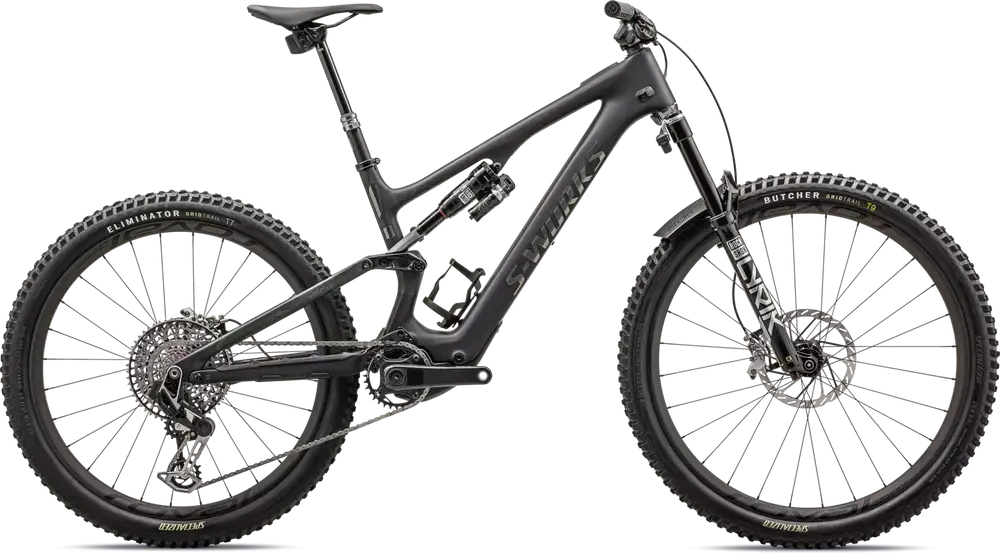
Overview: The Specialized Turbo Levo SL is a lightweight and efficient e-MTB designed for trail riding and enduro. It features a powerful motor and a long-lasting battery, making it ideal for riders who want to tackle challenging terrain without sacrificing performance.
Features:
- Specialized SL 1.1 motor
- Specialized M1-500 battery
- FOX 36 Rhythm suspension
- SRAM GX Eagle drivetrain
- Dropper post
Pros:
- Lightweight and agile
- Powerful motor and long-lasting battery
- Excellent suspension and handling
- Versatile for trail riding and enduro
Cons:
- Higher price point
- Limited range on maximum power settings
Who it’s good for: Riders who prioritize performance, efficiency, and agility. Suitable for trail riding, enduro, and technical terrain.
Price range: Starts at $6,999
Specs:
| Feature | Specialized Turbo Levo SL |
|---|---|
| Motor | Specialized SL 1.1 |
| Battery | Specialized M1-500 |
| Suspension | FOX 36 Rhythm |
| Drivetrain | SRAM GX Eagle |
| Wheels | Specialized Roval Control 29 |
| Weight | From 41.5 lbs (18.8 kg) |
Where to buy: Specialized retailers, online stores and the official Specialized website
Trek Powerfly LT 9.7
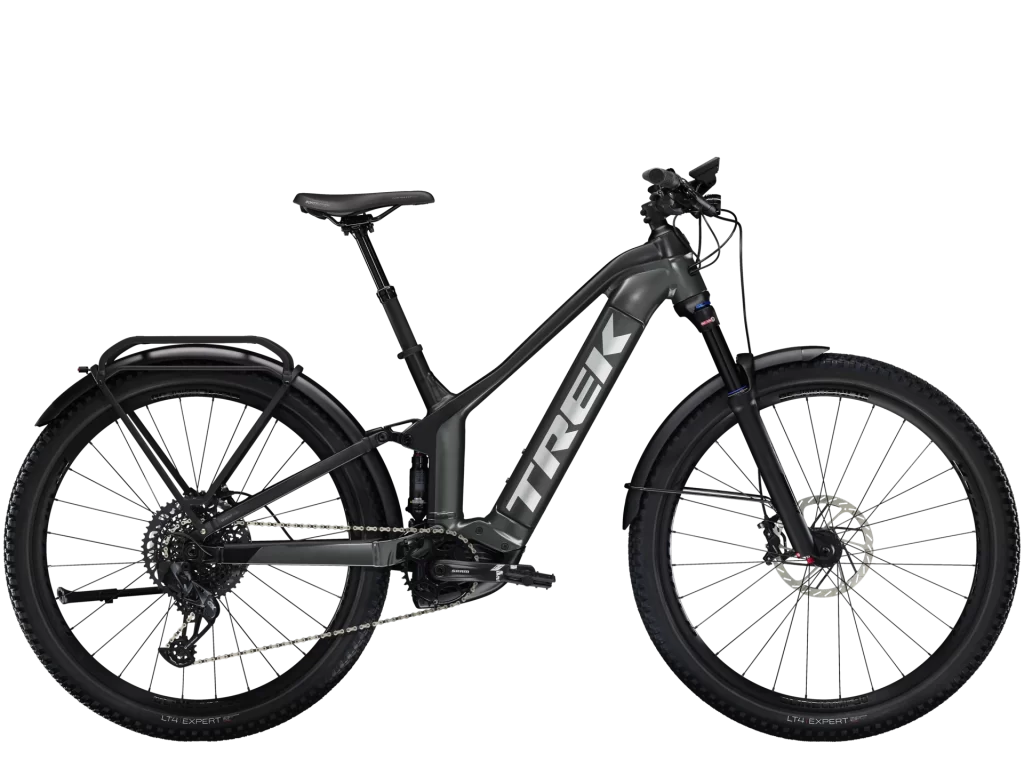
Overview: The Trek Powerfly FS 9 Equipped Gen 3 is a capable e-MTB designed for downhill and enduro riding. It features a powerful motor, robust suspension, and a long-lasting battery, making it ideal for riders who want to tackle the most challenging trails.
Features:
- Bosch Performance Line CX motor
- Bosch PowerTube 750 battery
- RockShox ZEB Select+ suspension
- SRAM GX Eagle drivetrain
Pros:
- Powerful motor and long-lasting battery
- Robust suspension for downhill riding
- Versatile for enduro and downhill
- Durable and reliable
Cons:
- Heavier than some other e-MTB models
- Limited range on maximum power settings
Who it’s good for: Riders who prioritize power, durability, and downhill performance. Suitable for enduro, downhill, and challenging trails.
Price range: Starts at $6,499
Specs:
| Feature | Trek Powerfly FS 9 Equipped Gen 3 |
|---|---|
| Motor | Bosch Performance Line CX |
| Battery | Bosch PowerTube 750 |
| Suspension | RockShox ZEB Select+ |
| Drivetrain | SRAM GX Eagle |
| Wheels | Bontrager Line Elite 30 29 |
| Weight | 26.98 kg / 59.49 lbs |
Where to buy: Trek retailers, online stores and the official Trek website
Conclusion
Understanding e-MTB geometry and weight is crucial for selecting a bike that aligns with your riding style, preferences, and physical attributes. By carefully considering these factors, you can enhance your overall riding experience and make the most of your e-MTB adventures.
Ready to find your perfect e-MTB? Share your thoughts and experiences in the comments below, or contact us for personalized recommendations. Let’s start your e-MTB journey today!
Kristina Grant is not just an enthusiast but a true authority on electric bikes. Nestled in the coastal beauty of Virginia, Kristina has found the perfect backdrop for her passion for electric biking. As a dedicated wife and homeschooling mom, her life revolves around family, faith, and the thrill of adventure.
Originally hailing from Ohio, Kristina's journey with electric bikes began as a curiosity and quickly evolved into a deep expertise. Her blog is a testament to her love for electric biking, combining her fascination for eco-friendly transportation with her coastal lifestyle.
When she's not cruising the beach on her electric bike, you'll find Kristina indulging in her other loves: long walks along the shore, getting lost in a good book, and cherishing moments with her loved ones. With a heart as big as her love for animals, especially cats, Kristina brings a unique perspective to the electric bike world, grounded in her strong faith in God and her dedication to a sustainable lifestyle.
Through her blog, Kristina shares her extensive knowledge of electric bikes, offering valuable insights, tips, and recommendations to fellow enthusiasts. Whether you're a seasoned rider or a newcomer to the electric bike scene, Kristina's blog is your go-to source for all things electric biking, fueled by her passion, expertise, and the scenic beauty of coastal Virginia.



